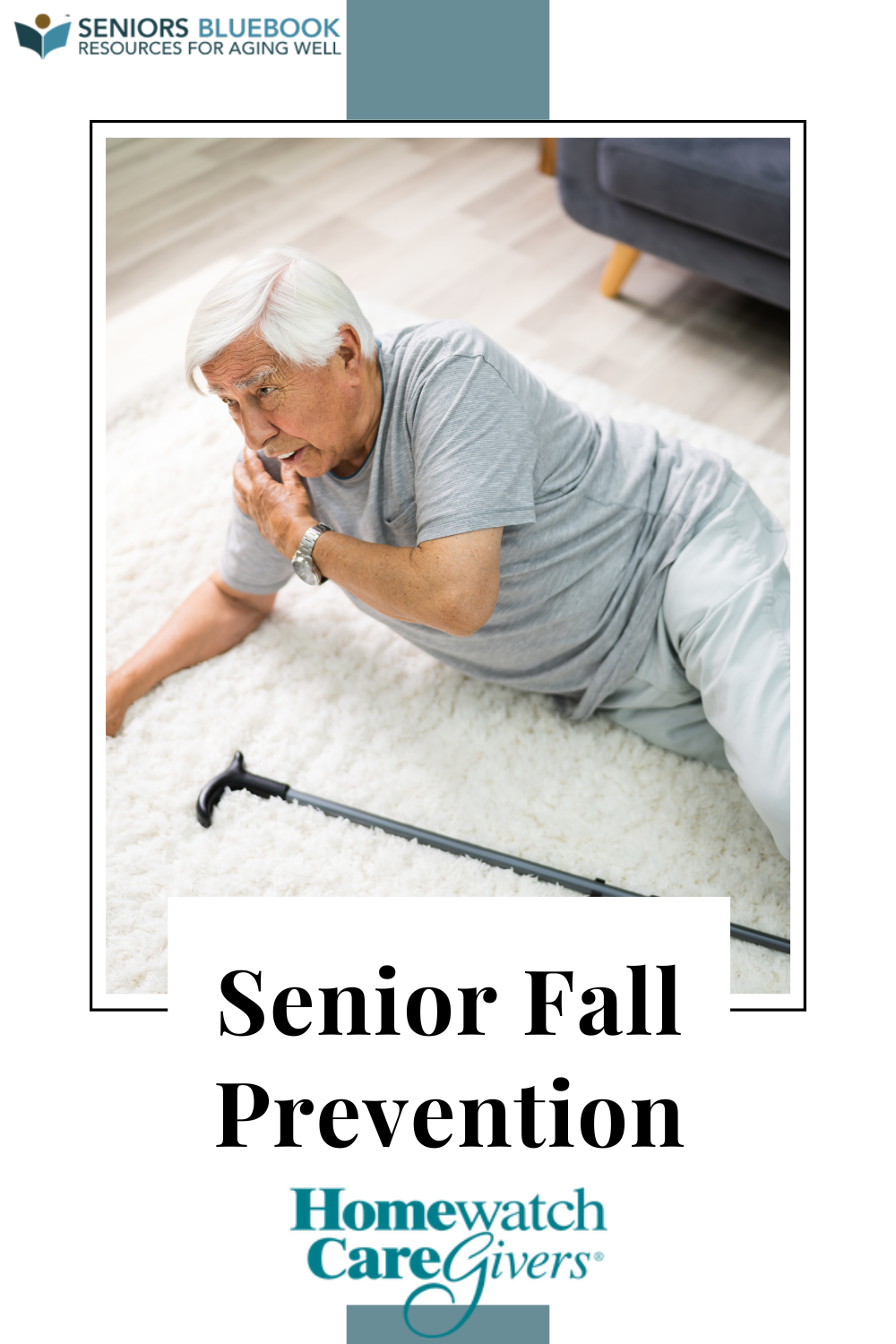Senior Fall Prevention
Homewatch CareGivers
For more information about the author, click to view their website: Homewatch CareGivers
Apr 27, 2023
Colorado - Boulder County
Homewatch CareGivers Helps to Prevent Falls Among Seniors
You’ve decided it’s best that your senior loved one spend his or her golden years living at home, where they feel safe in their own familiar atmosphere. Although one’s long-time home can provide comfort and happy memories, it might need some simple updates to reduce the potential for injuries.
According to the National Center for Injury Prevention and Control, falling is the leading cause of death and injuries among adults over the age of 65. More than one-third of all seniors (or about 11 million people) fall each year, resulting in almost 12,000 deaths. Fall survivors lose their mobility in 50% of falling cases, and 40% permanently lose the ability to live independently.
At Homewatch CareGivers, our caregivers can spot the most common fall risks that could endanger your elderly loved one. These include floor clutter, pets underfoot, slippery bathroom tiles, and more.
If these facts alarm you, it’s time to take action. Check for problems you might not otherwise notice, such as:
- Dimly lit rooms and hallways: Make sure all rooms are well lit, as vision can worsen with age, chronic conditions or other factors. Change any dim lightbulbs to higher-watt bulbs. For nighttime, provide a nightlight or a touch-light on the nightstand near the bed.
- Cluttered floors: Your loved one may shuffle or not pick up their feet when they walk, resulting in falling if their foot catches an object on the floor. Move any extension cords out of the way, or any other clutter.
- Slick floors: The majority of falls in the home happen in the bathroom. If your senior has a standard bathtub that is very low to the ground, and no assistance to get in or out, install non-slip strips or a bathmat. Add grab bars and a shower bench in the shower stall. Make sure there is a non-slip carpet mat near the toilet and bathtub and that towels are low and easily accessible.
Learn more about bathroom hazards to watch out for by clicking here! or call 303-625-9365 to talk with an expert.
- To view the original version of this article visit www.homewatchcaregivers.com/resources/in-home-senior-safety/fall-prevention/
- Seniors Blue Book was not involved in the creation of this content.
Other Articles You May Like
Medication Tips For Seniors
Did you know that nearly one-third of the population has difficulty swallowing pills? Most people dont swallow pills correctly. This often results in gagging, choking, and vomiting, which usually results in people not taking their medications at all, or not taking the recommended dosage, which then results in a need for later additional medical care.If you are caring for a senior who has trouble swallowing their pills, here are some medication tips and some good news. Researchers have found new techniques that make pill-popping easier, even for large pills.German researchers recently tested two methods of swallowing pills and found that 80% of the time these methods worked better than the normal way of taking a pill. The first is the pop-bottle method, and it makes tablets go down with ease. The second is the lean-forward technique, which sends capsules straight down the throat. Both have been rigorously tested by 151 volunteers who swallowed numerous dummy pills for the sake of science. And now they are being shared with the world via their publication in the Annals of Family Medicine.Read about each method so you can try it yourself or have the senior you are caring for try it. Just may make life a little easier for you both.
Caregivers Forced to Choose Between Caring for a Loved One and a Job
At least 42 percent of U.S. workers have been caregivers for aging loved ones in the last five years. In fact, most family caregivers work full or part-time while caring for their parent, spouse, aunt, uncle, or other loved one. Juggling Your Job and Caring for a Loved One The majority (68 percent) of family caregivers report making work accommodations because of caregiving duties, including: Arriving late/leaving early or taking time off Cutting back on work hours Changing jobs Stopping work entirely If this is you, you understand the challenge of juggling work and caregiving. Youll want to know that AARP is fighting for workplace flexibility, like family leave or paid or unpaid sick leave, to support family caregivers as they balance work and caregiving responsibilities. AARP is pushing for legislation that would: Let employees use their existing sick time to help care for a family member; or Give employees a few hours of unpaid time each year to help care for their loved ones; or Allow employees unpaid leave to take their loved ones to the doctor, in the same way 15 states allow employees to take unpaid time off to attend parent-teacher conferences and school events.
Embarrassing Things People With Dementia Say
Many people with dementia lose their social filters and no longer understand what is or is not appropriate to say in public. They do not say embarrassing things intentionally but have indeed lost the lens they used to live with. You may have encountered situations like these: Person with Dementia upon hearing someone speaking a different language: Speak English! or they may use a racial slur to describe them.I have seen and heard many elders using racial references that were, to say the least, disrespectful. It doesnt necessarily mean the people are racist. Many of our elders grew up in much less diverse communities than we have today. They have simply lost whatever inhibitions they may have had. When they see someone of another ethnicity, they blurt out labels that they heard as youths, embarrassing everyone involved.How to respond: One of my clients used to make these remarks frequently. He also had travelled a lot. I would apologize calmly to the person and then begin talking about what language I thought they might be speaking and what country they might be from, asking my client if he had ever been there on his travels. This could lead him into a conversation about travel. If the person, he was making the remark about was on staff at the nursing home Id include them in the conversation.Person with Dementia, generally a man pinches a woman or otherwise acts out sexually: Nice butt!Stay calm and realize that this behavior is caused by the disease. Dementia has stripped your dad of his inhibitions and he really cant help it. Try not to overreact from embarrassment.How to respond: Calmly say, Thats inappropriate, Dad, or something to indicate that the action is not acceptable. It wont help to scold, however. Apologize to the person affected and then if possible, move your dad away. Explain to the person that dad has Alzheimers and his actions are the result of the disease. If you cant defuse the situation by moving him away, just allow the affected person to handle it. If it happens to a professional caregiver, they are trained to handle these situations.When these and other uncomfortable situations occur, we are embarrassed for ourselves and for the person our elder once was. Learning that we arent alone in enduring this public embarrassment helps, Talk with other caregivers, either in person or online, for perspective and the chance to laugh about these situations. When we share our stories with people who understand, our pain and embarrassment doesnt take on a life of its own. Try a caregiver forum, such as the one at AgingCare.com
Local Services By This Author
Homewatch CareGivers
Non-Medical 2945 Center Green Court, Boulder, Colorado, 80301Homewatch CareGivers, established in Colorado over 30 years ago, with a reputation of delivering excellent in-home care and providing a wide range of services that assist with activities of daily living, as well as comprehensive personal care and transportation. Specializing in care for Dementia, Alzheimer's, Parkinson's and other Chronic Illness. You can feel confident that our caregivers are well-trained employees of the company. With teamwork and dedication we bring a level of commitment to providing the highest standards of homecare and compassion. We provide assisted living in the best environment possible, your own home. We also provide care to clients within assisted living locations or wherever they call home. Each client is assigned to a dedicated Care Manager, who oversees the care. By making the client the center of our care, it becomes possible to encourage independence, companionship and a higher quality of life. Specializing in 24-Hour Care, Veterans Care and Dementia, Alzheimer's, Parkinson's.
Homewatch CareGivers
Non-Medical 504 South College Avenue, Fort Collins, Colorado, 80524Homewatch CareGivers, established in Colorado over 30 years ago, with a reputation of delivering excellent in-home care and providing a wide range of services that assist with activities of daily living, as well as comprehensive personal care and transportation. Specializing in care for Dementia, Alzheimer's, Parkinson's and other Chronic Illness. You can feel confident that our caregivers are well-trained employees of the company. With teamwork and dedication we bring a level of commitment to providing the highest standards of homecare and compassion. We provide assisted living in the best environment possible, your own home. We also provide care to clients within assisted living locations or wherever they call home. Each client is assigned to a dedicated Care Manager, who oversees the care. With our approach of Client Centered Care, it becomes possible to encourage independence, companionship and a higher quality of life.Specializing in 24-Hour Care, Veterans Care and Dementia, Alzheimer's, Parkinson's.

